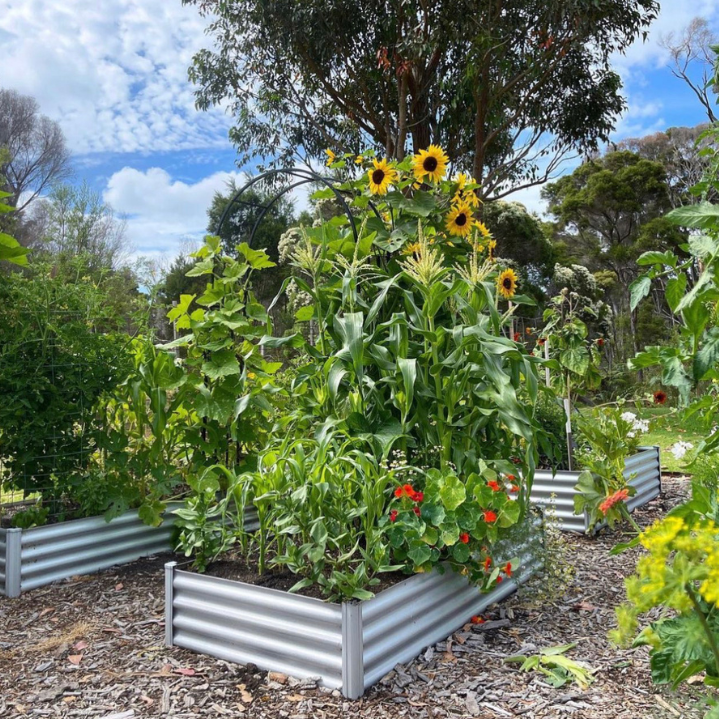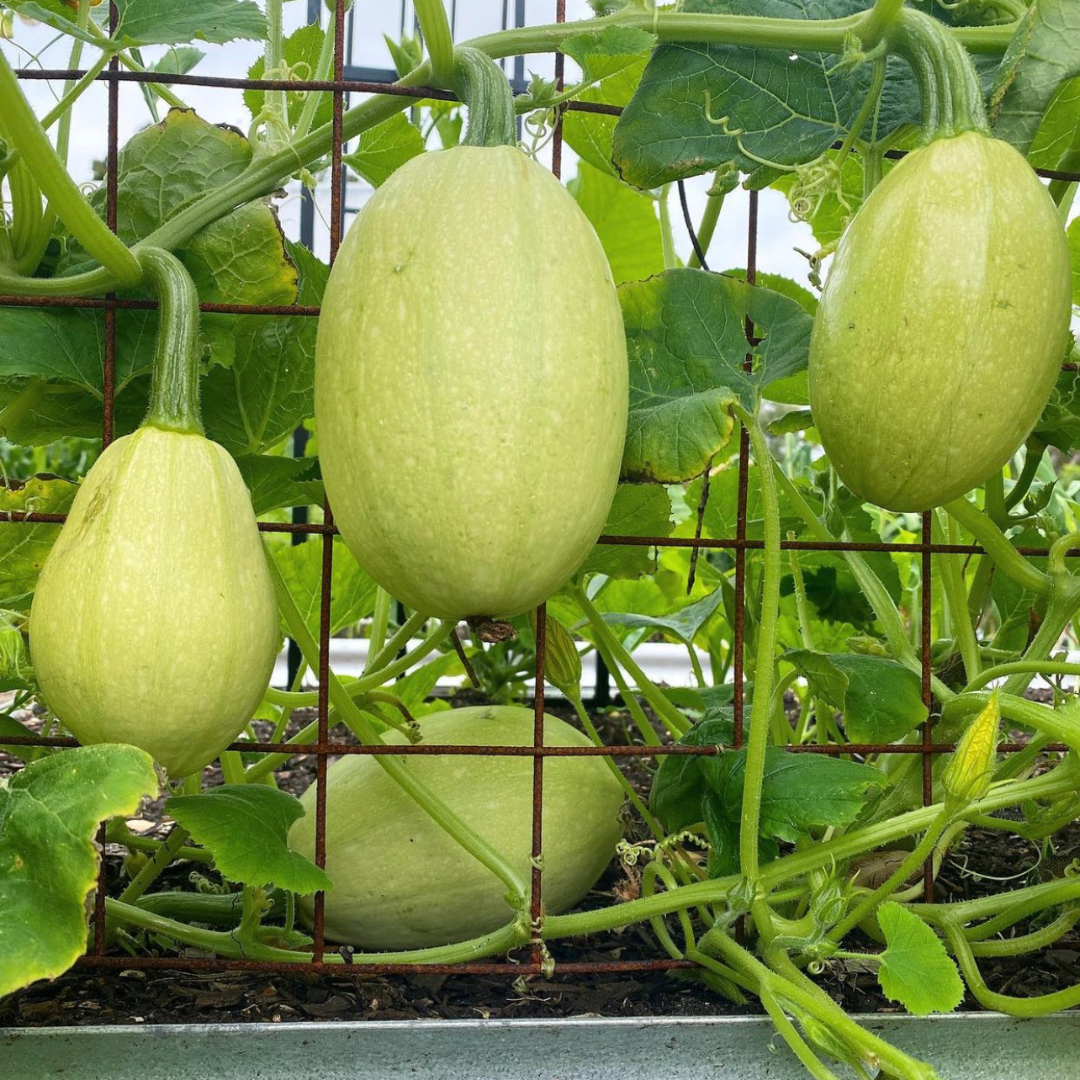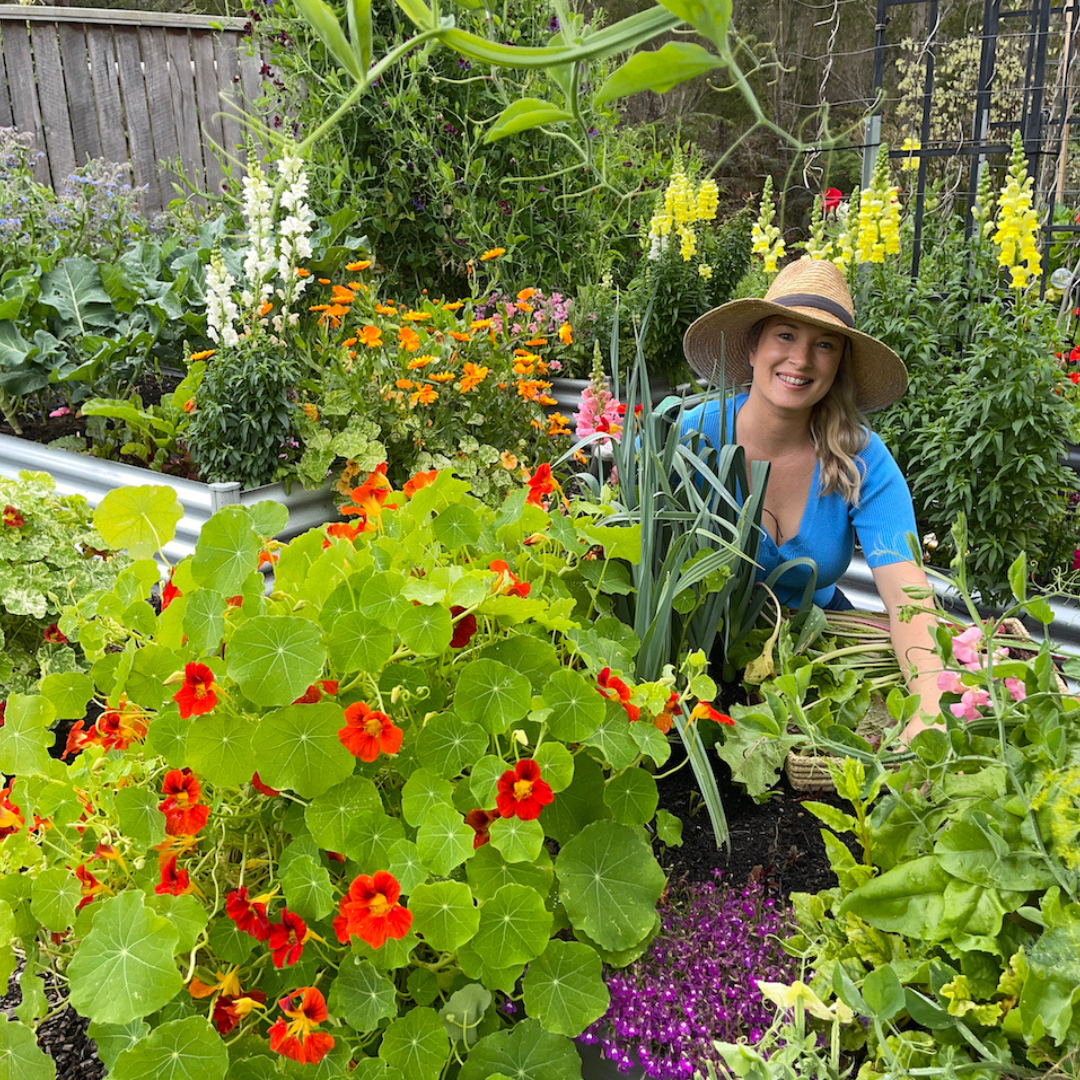
Starting A Veggie Garden
Feb 08, 2023How exciting! If you’re here it means you are keen to start growing some food and in that case, you’ve come to the right place because that’s what I am all about!
Once you start growing and more importantly eating your own food I can tell you from personal experience you won’t look back. Trust me!
The thing is though it can be tricky at first. Like any new skill you are trying to learn it takes time to learn it. You wouldn’t expect to be able to pick up a guitar and just play a song, having never learnt how (unless you’re a musical genius!). Growing food is the same. I hope these tips to get started will help you on your way.
Start smaller
But why I hear you ask..
I have a large garden now, but it didn’t start this way. I have added a few new beds each year. This happened for a few reasons and I’m actually glad it happened this way.
Firstly, it would have been out of my budget to have my large veggie garden set up all in one go. Setting up a handful of beds each year was far more achievable for me.
Secondly, I never intended to have a veggie garden this big. Like I said at the start “once you start eating your own food you won’t look back” I only ever wanted four garden beds, enough for a little veggie garden to grow some basics. Alas… the veggie growing addict was unleashed.

Thirdly and this is important to mention… I believe it’s better to have a handful of really well producing garden beds growing lots of healthy plants, rather than having lots of beds growing unhealthy plants. If you start large and don’t know how to grow food yet, you might find that you have the later! A big garden with lots of unhealthy poorly producing plants. If I had started with a garden the size of mine today I would have found it really overwhelming and I would have had lots of beds with crappy plants.
The right spot
Not everyone has a lot of choices when it comes to choosing a spot for the garden. If you live in a city, it's likely you don't have a large front or back yard. Don't let that deter you. You don't need a huge space to grow food. Simply check your location in relation to the sun. Where does the sun rise and set & more importantly where does it rise and set in and how low does the sun travel in winter? In winter the sun sits lower in the sky. This means that what might be a lovely sunny spot in summer might actually be shaded in winter.
Extra tips
- Check for shade thrown by fences and trees bare in mind that the winter sun will through around double the amount of shade so If a fence is 2 metres high, in winter it may throw at least 2 metres of shade.
- Keep in mind that trees grow! I know you're probably thinking good one "captain obvious"! I know this seems obvious but it's something that caught me out as a beginner. It’s easy to forget that the tree over the back might be 4 metres higher in a couple of years.
- Try to avoid putting your garden at the base of large trees, not only do they throw shade, but the roots can seek water and nutrients from your garden & deplete your soil faster!
Sunshine
Your veggies can still grow with only a few hours of sun but it is far from ideal. Try to find a spot that has at least 6 hours of sun. If you are in a hot climate (like a lot of Australia) your veggie garden will thank you for some afternoon shade in summer. If you’re in a hot climate and don't have any shade in the afternoons that’s ok, it's easy to erect some shade for your veggies in summer if you need it.

If you have to choose between morning sun or afternoon sun - choose morning sun. If you don't have the ideal spot, don't be deterred. I have successfully grown veggies when my garden only got 4 hours of sun, it was frustrating because everything grew very slowly but it still grew. It just meant I needed to select food that grew better with less sun.
Plan but don’t over plan
It's easy to overthink it. It's better to start and let it evolve with time, It's definitely what happened with mine. Like I said earlier I only planned on having 4 garden beds and now I have 13! I Couldn’t have planned for that!
THINGS TO CONSIDER THAT I THINK ARE IMPORTANT
- In ground or on top? I highly recommend growing above ground in raised beds. It's how I grow all my food. It's easier to control the soil this way (along with a lot of other reasons). It is a more expensive option though, so if it's not doable for your budget, you can always grow in the ground. It's worth noting this will be more difficult to manage as a beginner though.
- Water - can you connect a hose close by or at least have one that reaches? No-one wants to cart watering cans back and forth in summer! If you want retic then it's probably easier to dig pipes into the beds before you set them up for aesthetics, however, you can always add relic later, so not worth overthinking it.
- Pathways - I have designed my garden without dead ends. This makes it easy to wheel a wheelbarrow full of soil but it also means no dead ends to trap snakes in my garden… they have an exit route and so do I!
- Pathways Width You also want to make sure the gaps between your beds are wide enough to fit a wheelbarrow - you’ll hate your life if you make your pathways too narrow and need to rely on moving soil shovel by shovel!
- Bed size - bigger is not better! I personally think the ideal size for a bed is around 1 metre wide, this way you can still reach across the bed from one side if needed. You also don't want them too deep. I think the ideal height is 30 cm - 50 cm (no taller) and My garden beds are 2 metres long I think it works well.
- More than 1 - try to have more than one bed…. If you are in a small space it's better to have two smaller beds than one big one. But why? … if something happens in your soil like a disease or a problem, it should be contained to the one bed and you'll still be able to grow well in the other one. (That’s the plan anyway)

Grow up - Think about adding height
I love growing vertically in my vegetable garden. Not only does it look beautiful, but it saves a lot of space, and it also helps keep some of our plants healthy.
I have a selection of archways and some basic flat trellises I made from dog fence and stakes. They may look a little ugly at first but once they are covered in green they do the job.
A few plants that love to climb, include
- Climbing beans
- Mini rockmelons
- Cucumbers
- Berries to name a few

Know your Climate
Are you in the tropics, a temperate climate, or a cold climate?
What you can grow and when will depend on where you live. We are so used to being able to go to the shops and buy whatever food we want, but the truth is if it's out of season, it has travelled thousands of KM’s or even overseas to get to you!
Soil is the secret sauce
Plants are living like we are, they need food and water too! Different types of veggies like different types of soil to thrive. It’s your soil that may make you or break you!
Here are some basics:
Drainage - Don’t miss this tip! One of the most important things when setting up your soil is getting the drainage right. If your soil doesn’t drain well it can cause issues down the track, cue heavy rainfall! Don't get me wrong having a moist soil is fab but it needs to drain you dont want your plants swimming! Drainage is easy to add to a water logged soil,
Poo - Not the human kind! We want a nice blend of manure in the garden. I personally love using cow poo. It’s my favourite to use in the veggie garden. Manure is going to add a good dose of nitrogen to the soil which is what is responsible for our green growth.
Compost - Organic compost

Something to note. Not all plants like or can thrive in the same soil. So Knowing your plants needs helps.
The right plants at the right time
One of the biggest mistakes people make is planting the wrong food at the wrong time. I would love if cucumbers grew year round but they are summer veg and cant be grown in winter or cold weather.
Unfortunately, garden centres often sell “out of season” veggies which is confusing for beginners.
Here’s a list of what grows in warmer weather and what grows in cooler weather to make it easier. Of course, some things grow year-round depending where you live. And if you live in a cold climate with a lot of snow, youll likely be growing bother summer and winter veg together with the aid of a greenhouse for your summer stuff. But here’s a very general quick list to get you started.
Warm Weather examples
Basil, beans, tomatoes, cucumbers, zucchini, squash, strawberries, melons, capsicum, eggplant, chilli for example.
Cool Weather examples
Beetroots, Lettuce, rocket, celery, carrots, radish, snowpeas, broccoli, cabbage, cauliflower, peas for example.
Choose healthy seedlings
Again, I point my finger at some garden centres for selling seedlings that are not healthy. So many times I have been into nurseries or large garden centres and their seedlings are riddled with disease. It’s tricky if you don't know what you’re looking for! Healthy seedlings = healthy plants.
Don't waste your time trying to grow sickly plants, they will never produce as well.
Plant for the bee’s
This is so understated! When I started growing flowers in my veggie garden I saw a massive increase in the amount of food I got out of my garden. That's because for alot of our food, we need bees and other insects to help pollinate our fruit by taking pollen from make flowers and doing the deed on female flowers! The thing is flowers are not only helpful for the bees, they also attract other helpful insects such as ladybugs, lace wings, and hoverflies which all help in the garden.

Some of my favourite flowers for the garden include
Cosmo
Poppies
Sunflowers
Calendula
Zinnia
Nastuirums, to name a few. I grow a large variety of flowers in my garden there are so many to choose from, they not only help with insects you can also save money on cut flowers and pick your own for your home
Eagle eye for problems and pests
If you miss early signs of problems in your garden, you may miss the boat on nipping things in the bud and preventing garden disasters and loss of plants and food. Early signs could include seeing eggs (of the unhelpful kind), holes in leaves, spots and discolouration on leaves, and drooping plants to name a few. I love to take ten minutes a day with my cuppa and have a wander to admire my plants. It is so easy to notice when things are pearshaped when you’re present.

Check out these jerks doing the dirty on my corn!
Caring for the plants
You can lay all the foundations for your plants to have success. The right spot, the right soil, spotting pests early but knowing what each plant likes to thrive or knowing how to boost fruiting for maximum Harvest baskets Is the difference between and average veggie garden and a great producing one. Some plants like pruning, some don't, some need fertilising and some don't. Some like to have flowers removed early and some don't. Some like vertical support or staking for support and some dont.
If all this sounds complicated or overwhelming - I make this a whole lot easier! Consider joining my in my online program. it's made and designed to make growing food easy for beginners!

I'd LOVE to help you grow food!
Happy Gardening,
Sarah

